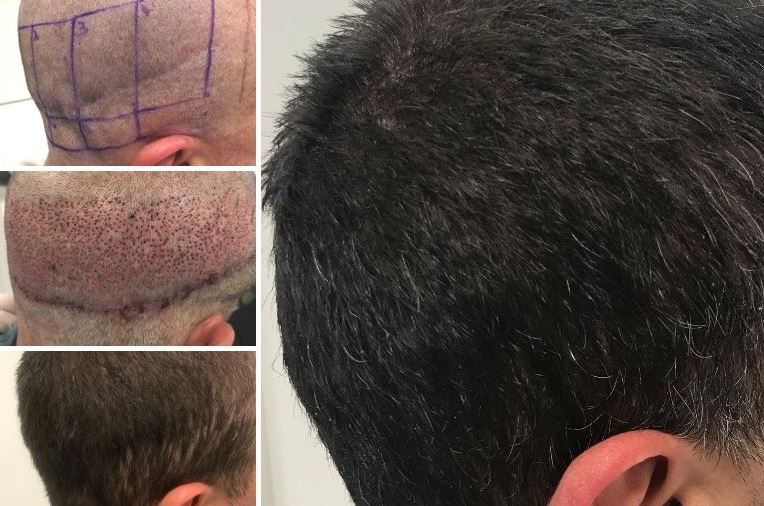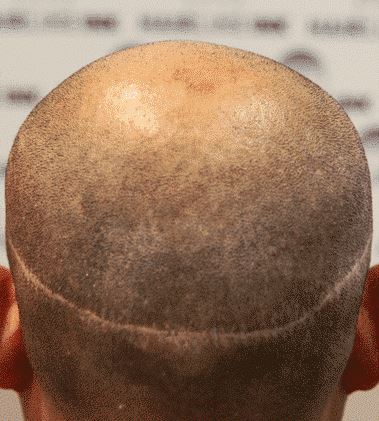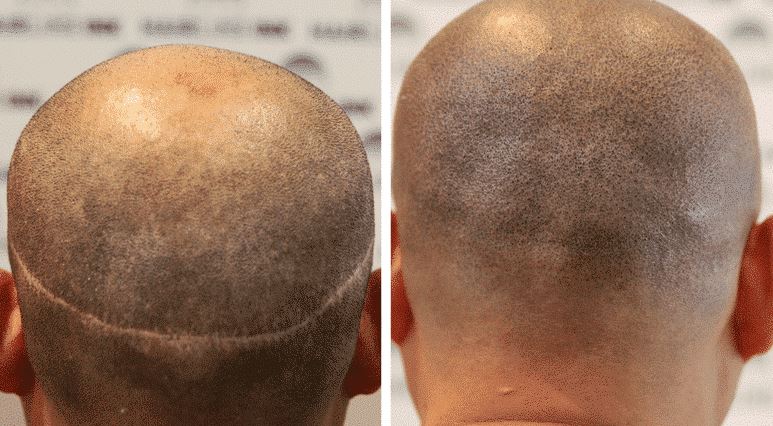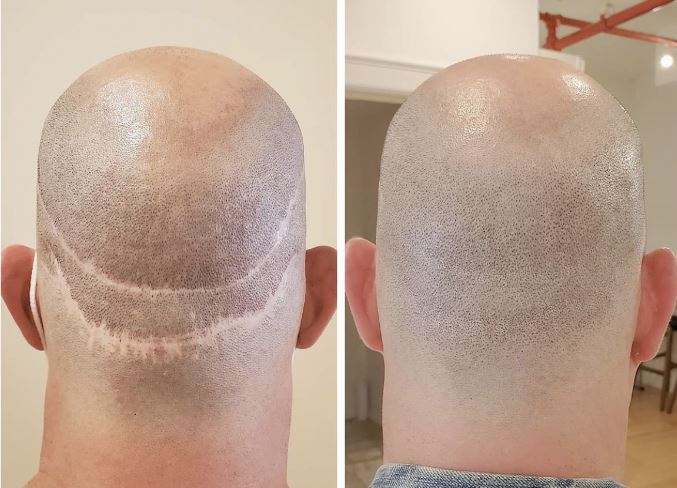What is Head Scar?
Our bodies are amazing at taking care of ours. When something happens and we are injured, different systems in our body work together to repair the damage. This usually happens quickly and effectively, however, the results are not always perfect.
Scars occur when collagen is used to seal broken skin. The American Academy of Dermatology states that scars can come in many colors and some may eventually disappear. Light scars can take months to heal, and deep scars will last for years – or for a lifetime.
Scars can occur on the scalp as a result of accidents, surgery, or previous hair treatments. While scars typically have fewer active nerve endings than healthy skin, they can still cause physical discomfort and social uneasiness.
While the appearance of scars on the scalp cannot be completely erased, there are treatments available to minimize their appearance.
Want To Hide a Head Scar?
If you’re looking for a way to hide your head scar, wearing a hat is the easiest option. Hats can help to conceal both bald spots and scars, and there are lots of different styles to choose from. Whether you prefer a fedora, a ball cap, a toque, or a newsboy cap, there’s a hat out there that’s perfect for you.
While hats can be a great way to conceal scars and baldness, they aren’t always appropriate. If you have a traditional office job that requires a suit or business casual clothing, keeping your hat on indoors might raise some eyebrows. Nor can you wear a hat for formal occasions such as a wedding, a funeral, or even dinner at a swanky restaurant.
Best option for hiding a head scar
Scalp micropigmentation is the best option for hiding a head scar and also gives the appearance of a full head of hair, making the individual look more youthful.
You probably have a lot of questions about the procedure. In our Frequently Asked Questions section, you can read more about this incredible treatment. You can also contact us for a complimentary consultation!
How long does a head scar take to heal?
The healing process for a scar can take up to 12-18 months. Initially, a normal scar will become darker but over time it will start to fade. People with darker skin may have dark scars that remain indefinitely. The new tissue that forms underneath the scar will also take longer to grow and mature than normal skin, so it is often more noticeable.
Hair Transplant for Hiding a Head Scar

Hair transplant surgery can help you achieve the look you desire. There are two types of transplants: follicular unit strip surgery (FUSS) and follicular unit extraction (FUE).
FUSS involves removing a strip of skin with the hair follicles intact and grafting it onto a different area of the scalp.
FUE is a minimally invasive procedure that involves extracting individual hair follicles and transplanting them to the desired area.
If you’re looking for a way to cover up a head scar or balding, hair transplant surgery is not only option. However, there are a few things to keep in mind before you undergo the procedure.
First, it’s important to know that hair transplant surgery is not cheap. It can cost several thousand dollars, and in some cases, up to $15,000. Additionally, since it’s considered an elective cosmetic procedure, it’s not typically covered by health insurance. So, you’ll need to be prepared to pay for the surgery out of pocket.
Scalp Micropigmentation for Hiding a Head Scar
Individuals who experience scarring after a hair transplant procedure, ranging from minor to severe, have options available to them for successfully covering the scars. The use of scalp micropigmentation is an excellent way to cover up head scars for those who have undergone a hair transplant, no matter how severe the scarring is. Additionally, this can add to the appearance of having a fuller head of hair.
Scalp micropigmentation is a process that can help cover up scars on the head by injecting small amounts of pigment underneath the scalp in a series of dots. With the help of a computer system, a natural hairline is created and dots are placed carefully so that, once the procedure is over, the individual’s scalp will look like that of someone who has just started to re-grow their hair after shaving or buzzing their head.
Those with some natural hair growth can use scalp micropigmentation to fill in and create the look of thicker hair in areas where hair loss or thinning is occurring. Scalp micropigmentation is commonly used by those experiencing hair loss as a way to project the image of a full head of hair before undergoing a hair transplant.
Scalp micropigmentation can also be employed after a hair transplant, as mentioned previously, to help fill in any thin areas and to disguise any scarring. The process of scalp micropigmentation for the purpose of scalp concealment is slightly different from the standard procedure used to treat conditions such as male pattern baldness or alopecia.
Because scars are made of thick layers of tissue which do not always absorb pigment the same way a thin section of scalp would, those receiving scalp micropigmentation may have to come back for a few more sessions. This is so we can be certain that the pigment is the right color and depth to create the desired effect.
Furthermore, the amount of scalp micropigmentation necessary for a scar treatment will be unique to each individual.
To help the scar blend in with the natural hair growth and hair pattern, we must apply the scalp micropigmentation not only to the scar, but also the areas above, below, and to either side of it. If you’re not happy with how much hair you have after a transplant, we can provide full scalp coverage. This will help improve the appearance of your existing hair and give you a more consistent look. You’ll feel better about your appearance and be more confident as a result.
Conclusion
A head scar can be a difficult thing to deal with. You may feel self-conscious and uncomfortable about it, and it can be hard to know how to hide it. There are a few different options available to you, however, and with the right approach, you can find a solution that works for you.



